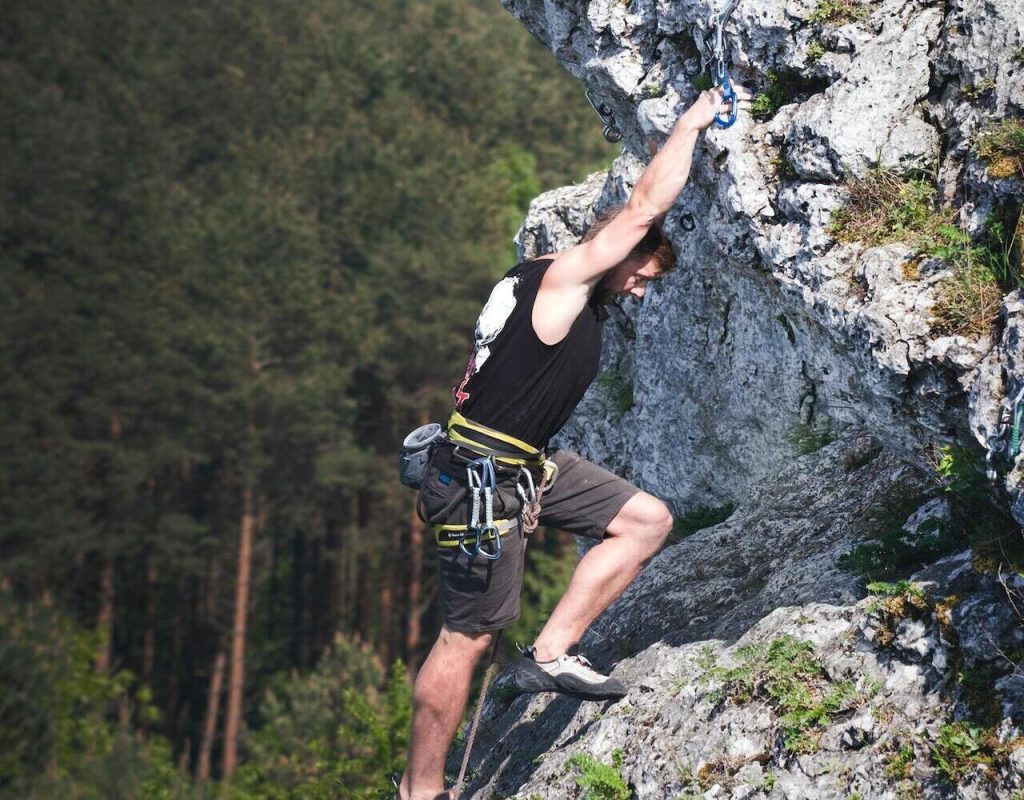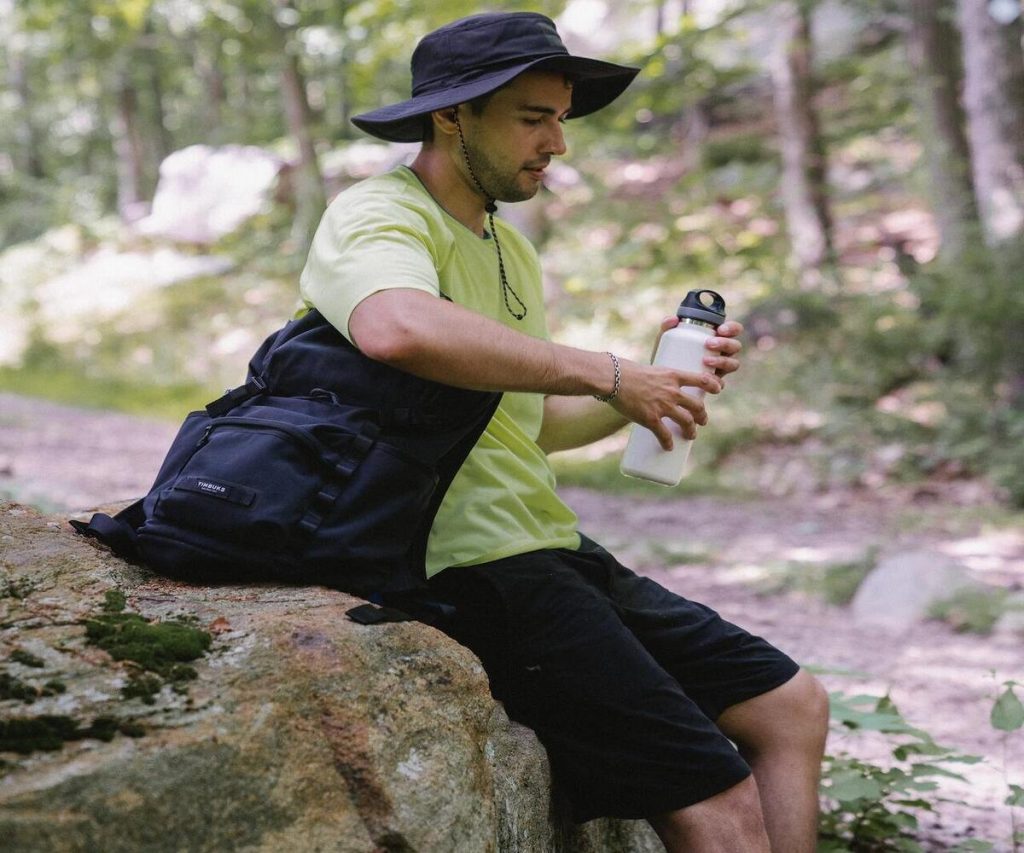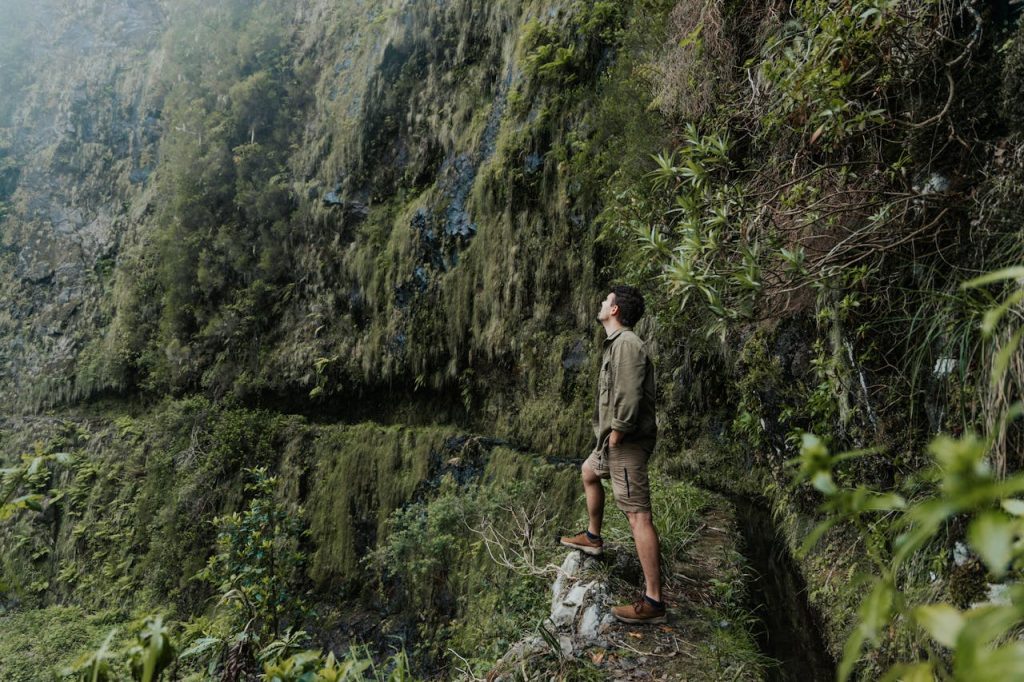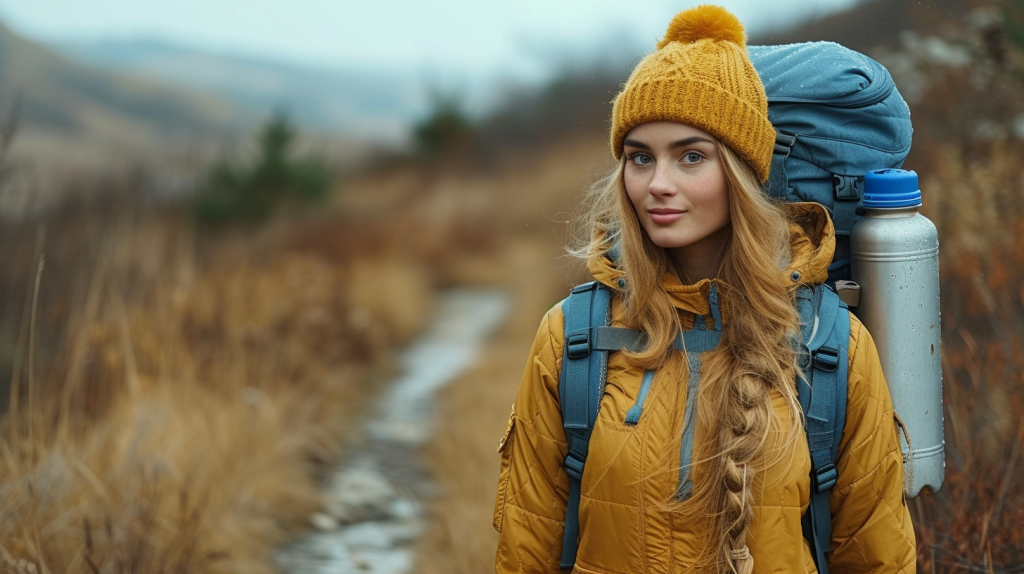Are you planning a summer hiking trip? One of the most critical aspects of hiking is selecting the appropriate attire, especially in the hot summer months. Proper clothing is essential to stay comfortable and safe during your trek. Knowing what to wear hiking in summer is crucial to ensure a successful and enjoyable outdoor adventure. This comprehensive guide will examine the key factors to consider when choosing hiking attire for the summer season. From understanding your hiking environment to selecting the proper footwear and accessories, we’ve got you covered. Be prepared to venture into the great outdoors with confidence and comfort by following our comprehensive guide on what to wear when hiking in the summer.
Understanding Your Hiking Environment
Table of Contents
ToggleResearching your hiking location
Hiking can be an exhilarating and rewarding experience, but it’s essential to understand the environment you’ll be exploring. Before embarking on any hike, it’s crucial to research your hiking location, know the expected weather conditions, and understand the terrain you’ll be traversing. By taking the time to prepare appropriately, you’ll not only stay safe, but you’ll also get the most out of your hiking adventure.
Researching your hiking location is a crucial first step in understanding your hiking environment. This can involve studying maps, reading guidebooks, and researching online. Look for information about the trail length, elevation gain, and challenging sections. Knowing the route in advance will also help you plan your food, water, and gear requirements.
It’s also essential to research the wildlife and plant life in the area. This will help you recognize potential hazards like poisonous plants or snakes. Additionally, it can help you respect the environment and its inhabitants. Knowing what animals to expect can also help you to take precautions to prevent encounters with potentially dangerous wildlife.
Knowing the expected weather conditions
Once you have researched your hiking location, checking the expected weather conditions is crucial. The weather can significantly impact your hike, so be prepared for any potential weather changes is essential. Look at the forecasted temperature, precipitation, and wind speed, and plan your clothing and gear accordingly. It’s also important to know the expected weather patterns for the time of year you’ll be hiking, as some trails may be impassable during certain seasons.
Understanding the Terrain
Understanding the terrain is also an essential part of understanding your hiking environment. Knowing the elevation gain, trail surface, and overall hike difficulty will help you plan accordingly. This can include packing the right gear, such as sturdy boots and hiking poles, and ensuring you have enough water and food for the length and difficulty of the hike.
Additionally, understanding the terrain can help you identify potential hazards or challenging sections along the trail. For example, if the trail involves steep inclines or narrow paths, you may need extra precautions to stay safe. Alternatively, if the trail involves river crossings or rocky terrain, you may need to adjust your footwear and pack accordingly.
Understanding your hiking environment is essential for a safe and enjoyable hiking experience. By researching your hiking location, knowing the expected weather conditions, and understanding the terrain, you can prepare accordingly and be ready for any challenges you may encounter along the way.
Clothing Materials for Summer Hiking

Clothing Materials for Summer Hiking
When it comes to summer hiking, choosing suitable clothing materials can make all the difference in terms of comfort, protection, and overall enjoyment of the experience. Here are some key fabric features to look for when selecting clothes for summer hiking.
Quick-drying fabrics
Summer weather can be unpredictable, with sudden rainstorms or sweaty hikes on hot days. That’s why it’s important to choose clothes made from quick-drying fabrics that wick moisture away from your skin and dry quickly. These fabrics are typically made from synthetic materials like polyester, nylon, or spandex. When you wear quick-drying clothes, you won’t be weighed down by wet, heavy clothing and will stay more comfortable overall.
Breathable Fabrics
Another important factor to consider when selecting clothing for summer hiking is breathability. Fabrics that allow air to circulate through your body can help regulate your temperature, keeping you cool and comfortable on hot days. Breathable fabrics include lightweight cotton, linen, or moisture-wicking synthetic materials. Look for clothes with ventilation features like mesh panels, vents, or breathable designs to ensure maximum airflow.
Moisture-wicking Fabrics
Sweat is inevitable when hiking in the summer, but wearing clothes made from moisture-wicking fabrics can help keep you dry and comfortable. These fabrics are designed to pull sweat away from your skin, which helps regulate your body temperature and prevent chafing or discomfort. Moisture-wicking fabrics can be made from synthetic materials like polyester or bamboo or natural materials like merino wool. They’re an excellent choice for base layers, shirts, and socks.
UV protective Fabrics
Finally, protecting your skin from the sun’s harmful rays is important when hiking in the summer. Clothes made from UV-protective fabrics can help block out the sun and prevent sunburns and skin damage. These fabrics are typically made with a tight weave or special treatment to block UV rays. Look for clothes with a UPF rating (ultraviolet protection factor) of 30 or higher for maximum protection.
In conclusion, choosing suitable clothing materials for summer hiking is essential for staying comfortable, protected, and enjoying nature. Quick-drying, breathable, moisture-wicking, and UV-protective fabrics are all key features to look for when selecting your summer hiking wardrobe.
Top Clothing Options for Summer Hiking
Summer hiking is a great way to explore the great outdoors, but wearing the proper clothing is important to stay comfortable and protected. Here are some top clothing options to consider when planning your next summer hike.

Shirts
Breathable and moisture-wicking t-shirts:
For summer hiking, t-shirts made from breathable and moisture-wicking materials are a great choice. These fabrics will help keep you cool and dry and prevent chafing and discomfort. Look for shirts made from lightweight synthetic materials like polyester or natural materials like bamboo or cotton.
Long-sleeved shirts for sun protection:
Long-sleeved shirts may seem counterintuitive for summer hiking, but they’re a great way to protect your skin from the sun’s harmful rays. Look for shirts made from lightweight, breathable materials like cotton or linen or with a UPF rating of 30 or higher.
Pants and Shorts
Quick-drying and moisture-wicking shorts:
Shorts are great for summer hiking, but choosing ones made from quick-drying and moisture-wicking fabrics is important to keep you comfortable on the trail. Look for shorts made from synthetic materials like nylon or polyester or with added features like mesh panels or vents for increased airflow.
Lightweight and breathable hiking pants:
If you prefer pants over shorts, lightweight and breathable hiking pants are an excellent choice for summer hiking. Look for pants made from synthetic materials like nylon or polyester or with added features like mesh panels or vents for increased airflow.
Hiking Socks
Importance of proper socks:
Proper socks are essential to any hiking outfit, and choosing ones that will keep your feet dry and comfortable on the trail is essential. Look for socks made from moisture-wicking materials like merino wool or synthetic blends and with added features like arch support or cushioning.
Materials to look for:
Selecting the right materials for your hiking socks is crucial to prevent blisters and discomfort. Opting for moisture-wicking materials that can draw sweat away from your skin is highly recommended. Merino wool is a popular choice for hiking socks, as it’s naturally moisture-wicking, antibacterial, and odor-resistant. Synthetic blends like nylon or polyester are also a good choice, as they dry quickly and are durable.
Choosing the proper clothing for summer hiking is essential for staying comfortable and protected on the trail. Breathable and moisture-wicking t-shirts, long-sleeved shirts for sun protection, quick-drying and moisture-wicking shorts, lightweight and breathable hiking pants, and proper hiking socks are all important clothing options for your next summer hike.
Footwear for Summer Hiking
Choosing the right footwear for summer hiking is essential for a comfortable and safe experience on the trail.
Hiking boots vs. hiking shoes:
The choice between hiking boots and shoes largely depends on the terrain you’ll be hiking on. For rugged and rocky trails, hiking boots with ankle support and sturdy soles are a great choice. However, hiking shoes can provide flexibility and breathability for less challenging terrain. It’s important to consider the type of hiking you’ll be doing and choose footwear appropriate for the trail.
Breathable and waterproof options:
In the summer, temperatures can rise quickly, and it’s important to choose breathable and waterproof footwear. Materials such as mesh panels or perforations are designed to allow air to circulate your feet, which helps to keep them cool and dry while hiking. Waterproof options like Gore-Tex or other waterproof membranes can help keep your feet dry in wet conditions, such as hiking through streams or encountering rain.
Proper fit and comfort:
The most important factor when selecting hiking footwear is proper fit and comfort. Your shoes or boots should fit snugly but not too tightly, with enough room for your toes to move freely. It’s important to try on multiple pairs of shoes and walk around before purchasing. Additionally, look for features like padded insoles or cushioned midsoles for added comfort and support.
Selecting the right footwear for summer hiking is essential for a comfortable and safe experience on the trail. Consider the terrain you’ll be hiking on, look for breathable and waterproof options, and make sure your shoes or boots fit properly and provide ample comfort and support. With the right footwear, you can enjoy all the beauty and adventure the great outdoors offers.
Hiking Accessories
Sun Protection
When spending extended periods outdoors during the summer, protecting your skin and eyes from the sun’s harmful UV rays is important. Here are some essential items to consider when it comes to sun protection.
Wide-brimmed hat:
A wide-brimmed hat provides ample shade for your face, neck, and ears. Look for hats with UPF protection for added sun protection.
Sunglasses:
Sunglasses with UV protection help protect your eyes from harmful rays. Look for wraparound styles for added protection.
Sunscreen:
It’s important to apply a broad-spectrum sunscreen with at least an SPF of 30 to all exposed skin to protect your skin from harmful UV rays. Remember to reapply every two hours or after swimming or sweating to maintain adequate protection.
Insect Protection
Insects can be a nuisance and even pose health risks when spending time outdoors.
There are ways to protect yourself from insects during summer hikes.
Bug spray:
It’s recommended to use an insect repellent with DEET, picaridin, or oil of lemon eucalyptus to keep mosquitoes, ticks, and other biting insects at bay while hiking.
Protective clothing:
Wear long-sleeved shirts and pants, and tuck pant legs into socks to prevent insect bites.
Hydration
Staying hydrated is crucial during summer hikes, especially in hot and humid conditions. Here are some hydration options to consider.
Hydration backpacks:
Hydration backpacks with built-in water bladders and drinking tubes allow you to carry plenty of water and stay hydrated.
Water bottles:
Lightweight and portable water bottles are a great alternative to hydration backpacks.
Layering for Summer Hiking
Layering is a technique used to regulate body temperature by adding or removing layers of clothing. Here’s why layering is important for summer hiking and some options to consider.
Explanation of layering:
Layering allows you to adapt to changing temperatures throughout your hike by adding or removing layers of clothing. The three layers typically include a base layer, an insulating layer, and an outer layer.
Importance of layering for temperature control:
Temperature changes quickly during summer hikes, with temperatures much more relaxed at higher elevations or in the shade. Layering allows you to adjust your clothing to stay comfortable and avoid overheating or hypothermia.
Layering options for summer hiking:
A lightweight moisture-wicking t-shirt or tank top can be a great base layer, with a light insulating layer like a fleece or down vest for added warmth. A lightweight rain jacket or windbreaker can serve as the outer layer for added protection against the elements. Choosing light and easily packable layers is important so you can adjust your clothing as needed throughout your hike.
Sun protection, insect protection, hydration, and layering are all important considerations for a comfortable and safe summer hiking experience. Be sure to bring the appropriate gear and clothing to protect yourself and be comfortable on the trail.
Other Considerations
Several other important factors are beyond the essentials discussed earlier when planning a summer hike.
Group Size and Dynamics
The size and dynamics of your hiking group can impact clothing considerations. For solo hikers, there is more flexibility in clothing choices as they don’t have to consider anyone else’s needs or preferences. However, group hikers need to consider everyone’s needs and preferences. Some members may prefer different clothing items or have unique requirements due to medical conditions or personal preferences.
Factors to Consider When Hiking with Children

Hiking with children requires additional planning and consideration, especially regarding clothing. Children are more susceptible to sunburn and insect bites, so it’s important to pack extra clothing and consider items like sun hats and insect repellent to protect them. Additionally, it’s important to choose comfortable and practical clothing that allows children to move freely and stay comfortable.
Budget and Style
Budget and personal style are also important factors when selecting hiking attire. While investing in high-quality clothing for long-term durability is important, budget-friendly options still provide protection and comfort for a successful hike. Additionally, many outdoor retailers offer stylish and practical hiking attire to make you look and feel great on the trail.
Proper clothing is crucial to a successful and enjoyable summer hiking experience. It’s important to prioritize items like moisture-wicking and quick-drying fabrics, sun and insect protection, hydration options, and appropriate layering techniques. Consider group dynamics, budget, and personal style when selecting hiking attire. With the right gear and clothing, you can stay comfortable and protected on the trail and enjoy all the beauty of nature.
Summary of Key Takeaways
- Moisture-wicking and quick-drying fabrics are essential for summer hiking clothing.
- Proper sun and insect protection is necessary to prevent sunburn and bug bites.
- Hydration options and appropriate layering techniques are essential for temperature control.
- Clothing considerations should be adjusted based on group dynamics and size.
- Hiking with children requires additional planning and care.
- Budget-friendly and stylish hiking attire options are available.
Prioritize Proper Hiking Attire
While it may be tempting to prioritize fashion over function when selecting hiking attire, it’s important to remember that proper clothing is essential for a safe and enjoyable hiking experience. Investing in high-quality, moisture-wicking fabrics, sun and insect protection, and appropriate layering techniques allows you to stay comfortable and protected on the trail. So, prioritize your clothing choices, plan, and enjoy nature’s beauty.
FAQs
What is the best fabric for hiking clothing in the summer?
The best summer hiking clothing fabrics are quick-drying, breathable, moisture-wicking, and UV-protective.
Do I need to wear long pants in the summer for hiking?
Wearing long pants in the summer for hiking is unnecessary, but they can provide sun protection and prevent scratches from vegetation.
Can I wear sandals for hiking in the summer?
Sandals are not recommended for hiking in the summer as they need to provide more support and protection.
How many layers should I wear when hiking in the summer?
The number of layers you wear when hiking in the summer depends on the temperature and comfort level.
Can I wear cotton clothing for summer hiking?
Cotton clothing is not recommended for summer hiking as it absorbs moisture and dries slowly, leading to discomfort and chafing.
How do I choose the proper hiking boots?
Proper hiking boots should fit well, provide good support, and have a sturdy soles with good traction for the terrain.
Do I need a hydration backpack for short hikes?
A hydration backpack is optional for short hikes, but it’s important to bring enough water to stay hydrated during the hike.




